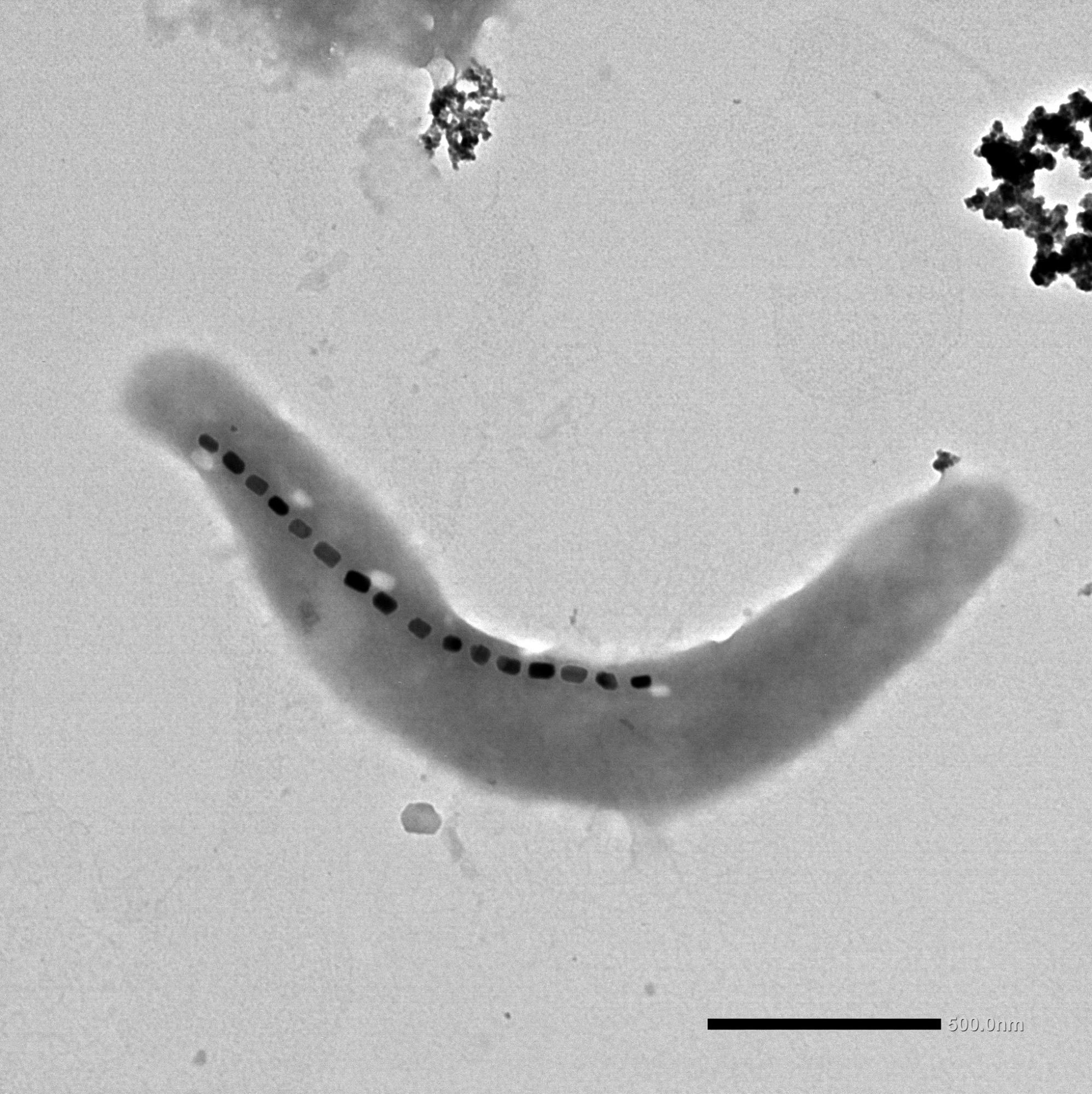Magnetic nanostructures are potentially useful medical instruments. They can be directed by external magnetic fields within the body to release medications or kill tumor cells once they have been incorporated into biological structures.
 TEM image of an M. blakemorei MV-1 bacterium with several magnetic nanoparticles forming a chain-link structure. The scale bar is 500 nanometers. Image Credit: © L. Marcano / HZB.
TEM image of an M. blakemorei MV-1 bacterium with several magnetic nanoparticles forming a chain-link structure. The scale bar is 500 nanometers. Image Credit: © L. Marcano / HZB.
However, only basic information on the magnetic characteristics of those nanoparticles could be gathered up until now, restricting their use in therapies.
A team at HZB has developed and tested a new approach for determining the characteristics of each magnetic nanoparticle.
Consider a nanomagnetic-structured vehicle that can be guided through the human body using external magnetic fields. When the vehicle arrives at its location, it may release a medicine or heat cancer cells without harming healthy tissue. This idea is being realized by researchers from several fields.
The abilities of so-called magnetotactic bacteria, which have the unique property of forming magnetic iron oxide nanoparticles inside their cells, are being investigated by a multidisciplinary research team at Universidad del País Vasco in Leioa, Spain. Within the bacteria, these particles, which have a diameter of roughly 50 nm (100 times smaller than blood cells) form a chain.
The Spanish researchers are exploring the possibility of utilizing “magnetic bacteria” as magnetic hyperthermia substances to cure cancer — the magnetic nanostructures will be guided to the cancer spot and heated by external areas to destroy the cancer cells.
Researchers have now collaborated with a team of physicists at HZB led by Sergio Valencia to investigate their magnetic properties in greater depth. All of these applications’ performance is highly dependent on the magnetic characteristics of the individual nanomagnets.
However, because the signals sent by these ultra-small magnetic structures are so weak, it is essential to average readings across thousands of them to extract useful information.
Average Values Are Not Enough
Only these averaged values can currently be assessed, which limits the creation of tailored nanomagnet applications. This, however, has evolved. During her postdoctoral term with the Valencia team at BESSY II, Spanish physicist Lourdes Marcano devised a new approach.
We can now obtain precise information on the magnetic properties of several individual nanomagnets in a simultaneous way.
Dr. Lourdes Marcano, Study First Author and Physicist, Universidad del País Vasco
Magnetic Anisotropy for Every Single Particle
Even when incorporated within biological beings, the approach enables the measurement of magnetic characteristics of individual magnetic nanostructures.
With the use of theoretical models, magnetic imaging at the scanning transmission X-Ray microscope MAXYMUS at BESSY II allows researchers to learn about the so-called magnetic anisotropy of every single nanoparticle inside the microscope’s visual field.
The method was validated by measuring the magnetic anisotropy of magnetic nanoparticles within a bacterium. Since it explains how a magnetic nanoparticle responds to external magnetic fields delivered in any direction, magnetic anisotropy is a key property for controlling and guiding magnetic nanoparticles.
Future Standard Lab Technique
Actually, magnetic imaging of magnetic nanoparticles inside a biological cell with enough spatial resolution requires the use of X-ray microscopes. Unfortunately, this is only possible at large-scale research facilities, like BESSY II, providing sufficiently intense X-ray radiation. In the future, however, with the development of compact plasma X-ray sources, this method could become a standard laboratory technique.
Dr. Sergio Valencia, Helmholtz-Zentrum Berlin
Journal Reference:
Marcano, L., et al. (2022) Magnetic Anisotropy of Individual Nanomagnets Embedded in Biological Systems Determined by Axi-asymmetric X-ray Transmission Microscopy. ACS Nano. doi.org/10.1021/acsnano.1c09559.